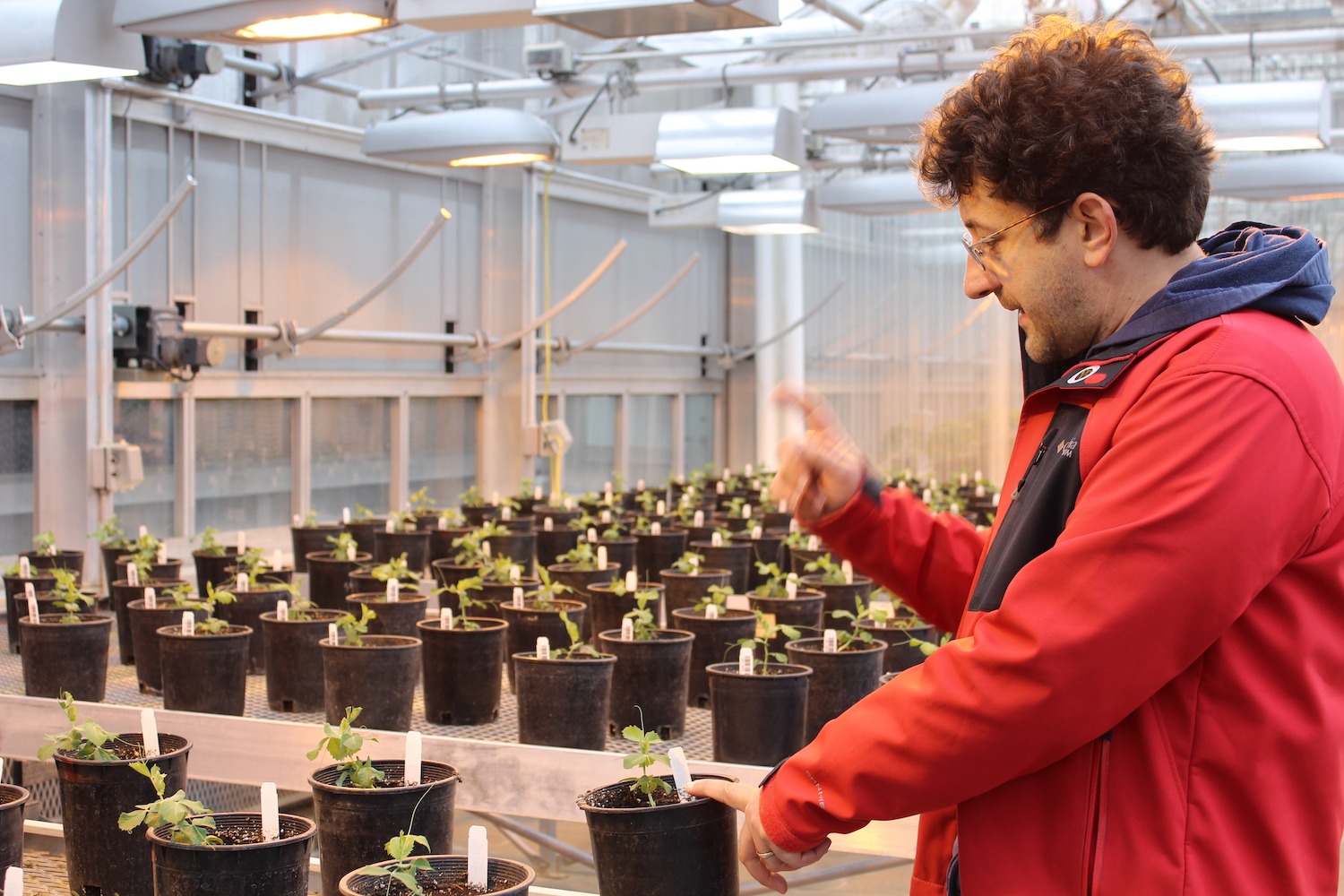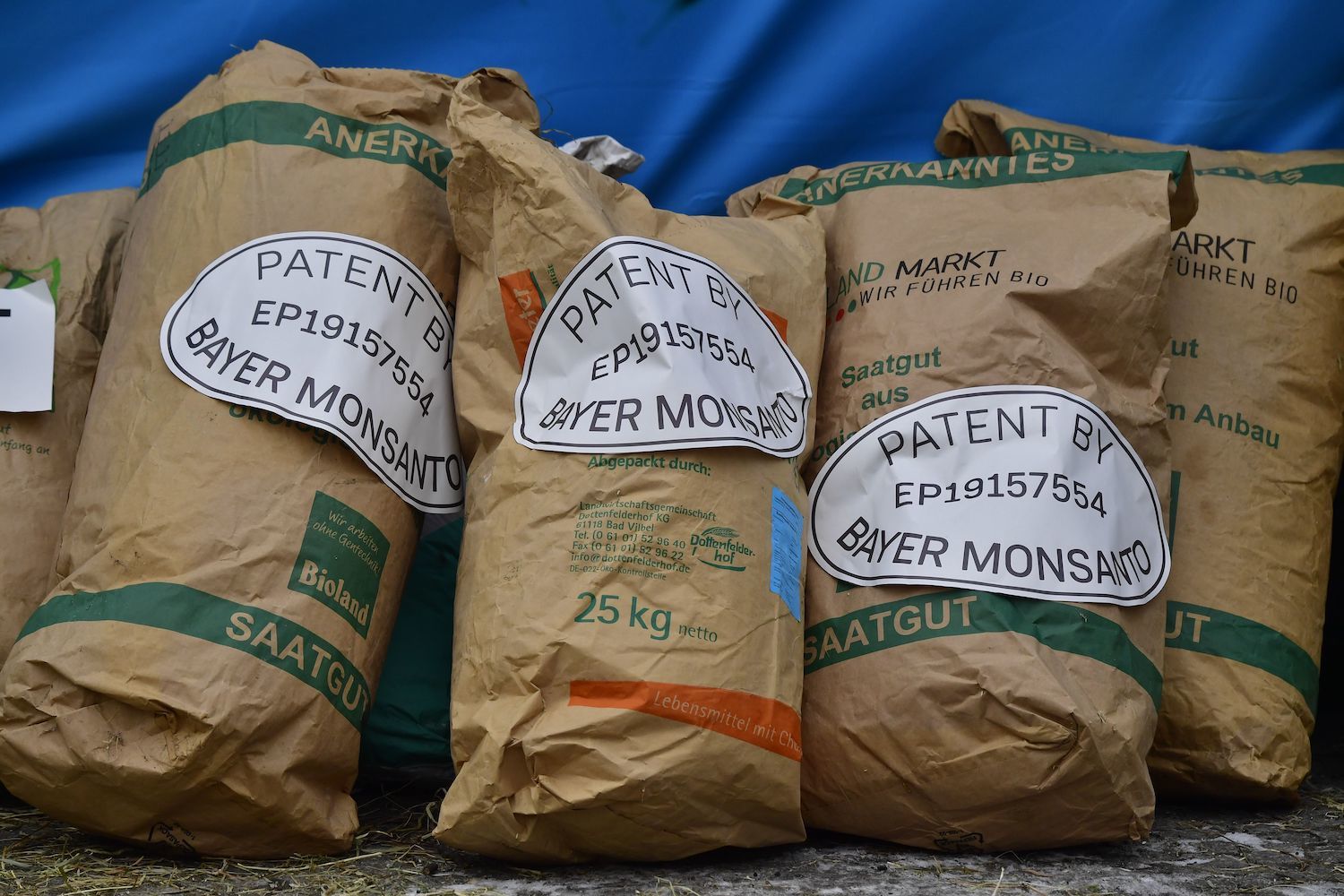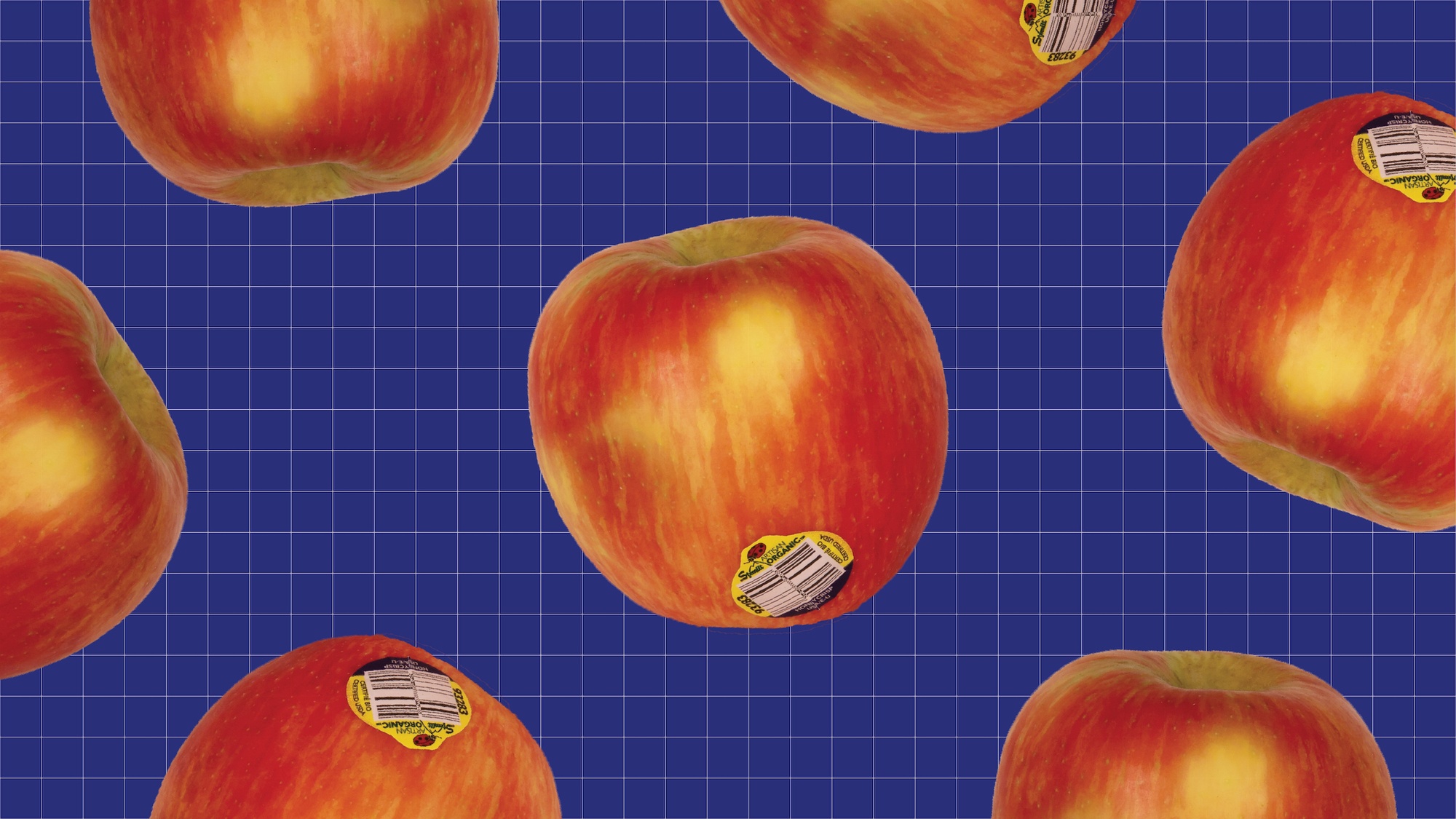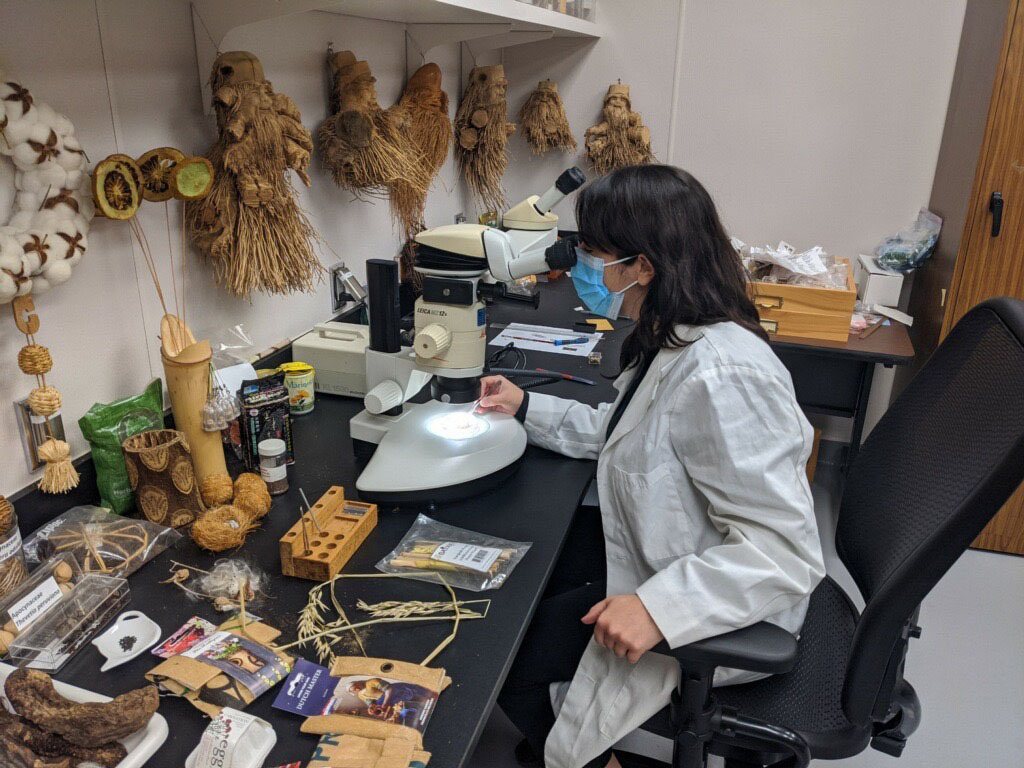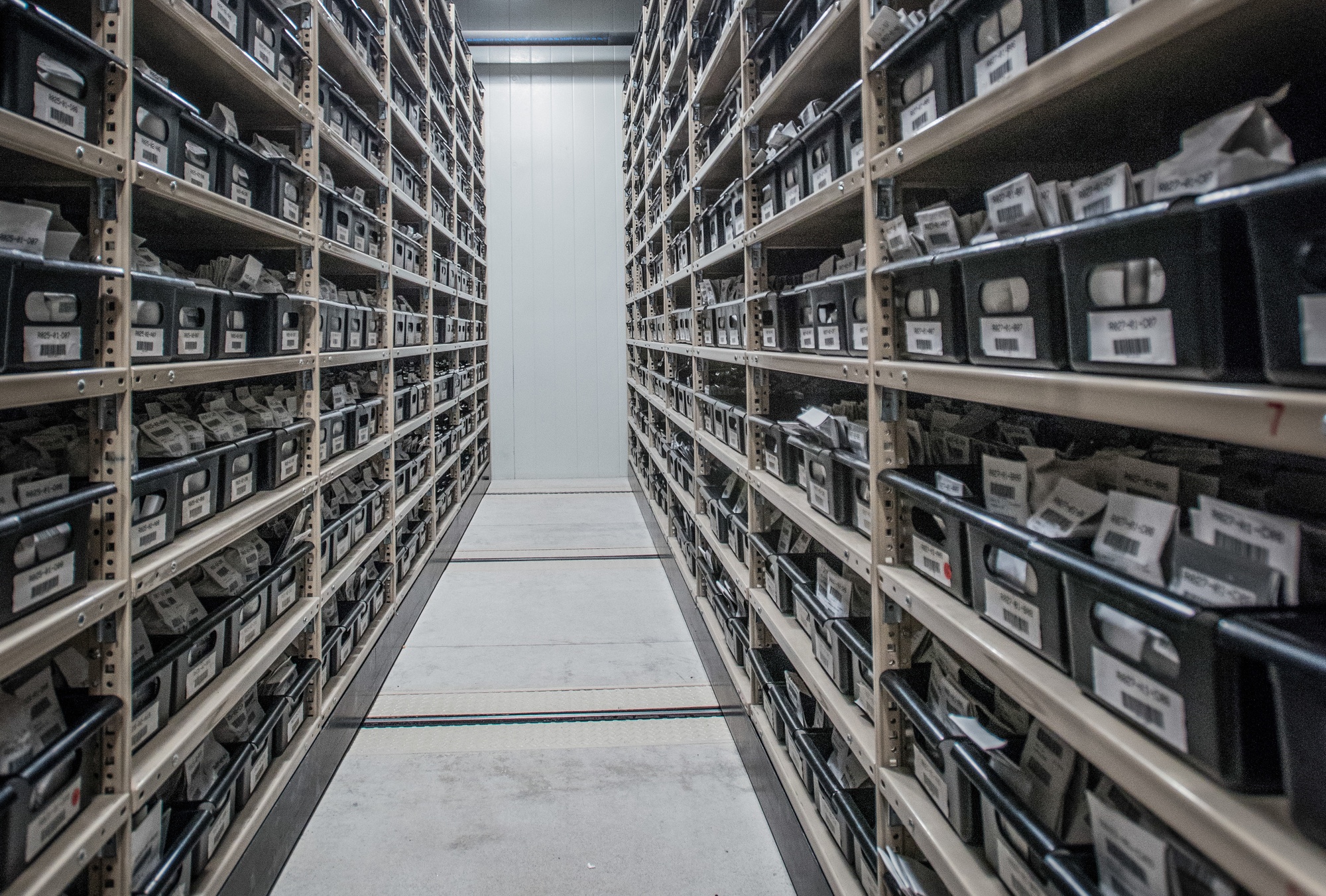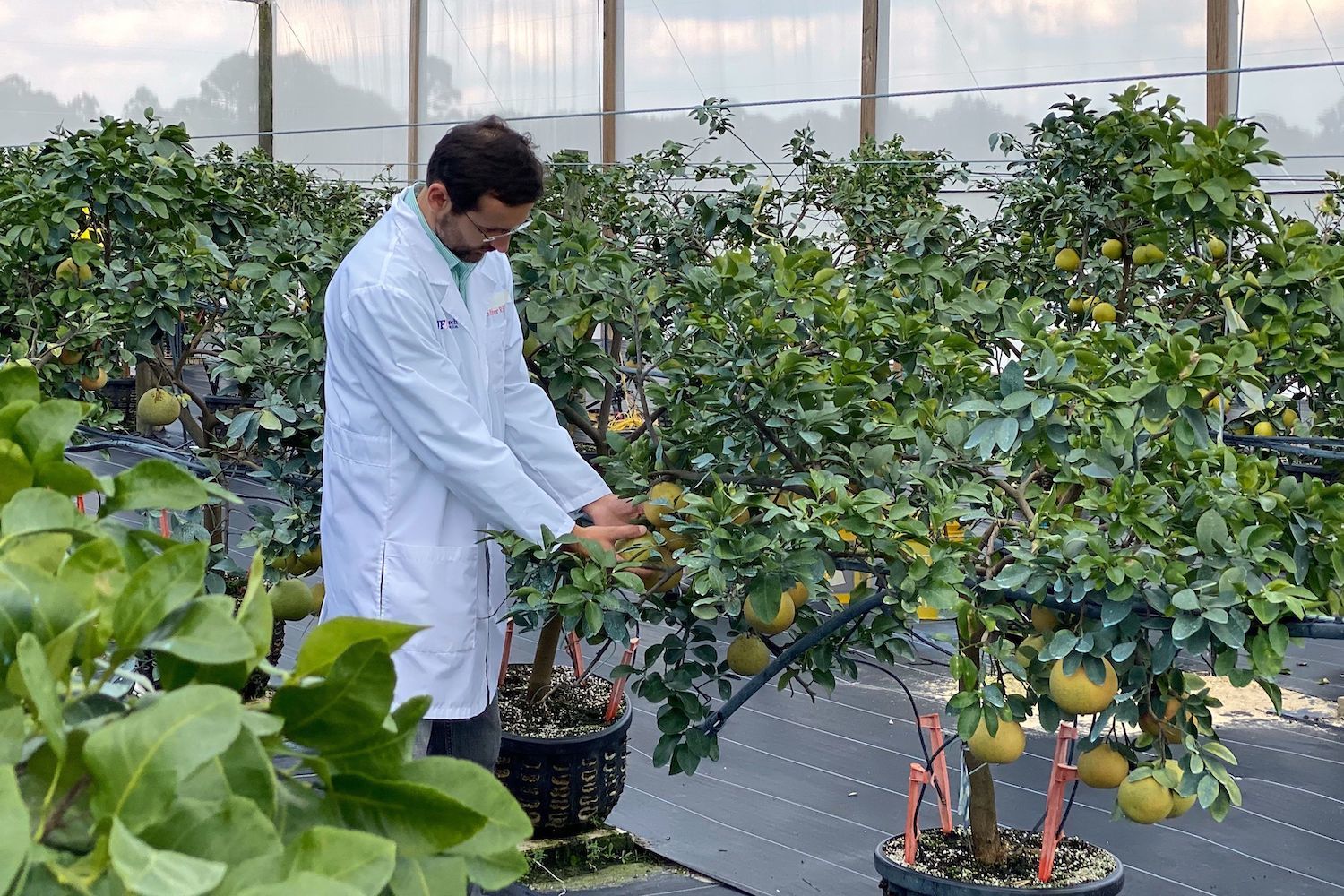
AFP via Getty Images
Advocates for leaving the Bayh-Dole Act as-is warn that altering it will scare off companies that attempt to commercialize new agricultural innovations.
Never heard of the Bayh-Dole Act? Joseph P. Allen might find that hard to believe.
For years, Allen has worked to advance partnerships in which private industries commercialize products manifested by the tinkering of public researchers—the Honeycrisp cultivated apple is his example of choice. These types of public-private partnerships were facilitated by the enactment of Bayh-Dole, a 1980 law Allen helped draft when he worked for the law’s eponymous Birch Bayh, a former senator from Indiana (former Kansas senator Bob Dole was co-author). Allen is now executive director of the Bayh-Dole Coalition, which seeks to protect the law—lately, from some advocates for lower drug prices, who want to change Bayh-Dole to accomplish this. Allen fears these changes will have ripple effects on all the sectors the law touches, including, notably, agriculture.
Pictured above: University of Florida researcher Dr. Johnny Ferrarezi inspects citrus fruit at University of Florida research greenhouse in Fort Pierce, Florida on November 19, 2019.
Once upon a time, before Bayh-Dole was enacted, if the federal government funded university research of any stripe, it held on to intellectual property (IP) rights for the resulting invention, with the eventual goal of finding a company that would commercialize it. The government apparently did a bad job, stockpiling some 27,000 patents it never got around to licensing. In the interest of getting a lot more inventions commercialized at a faster pace, with the aim of making the U.S. more scientifically competitive, Bayh-Dole was passed. This semi-obscure but significant legislation allowed universities to retain IP rights on federally funded developments; in fact, they were now mandated to make a good-faith effort to turn those inventions into useful products. Using Allen’s apple example, here’s how the system works these days: Researchers at the University of Minnesota (UMN) developed the Honeycrisp apple by merging the Keepsake and MN1627 apples; they patented their invention in 1988 and soon thereafter, the university began licensing Honeycrisp apple trees to nurseries. However, if UMN failed to license these apples, under a Bayh-Dole statute called march-in rights, the government could theoretically (it has allegedly never happened) “march in” to relicense the patent to another partner.
Certain Congresspeople and attorneys general, among others, have lately been seeking to use these march-in rights in another way: to control inflated prices of certain inventions, namely, life-saving drugs. In their proposed scenario, the government would be able to march in to take back the license for a drug developed with federal funds if its price tag is too high, then relicense it to a company that would charge less. But according to Allen—and to Bayh and Dole themselves—price control was not written into the language of the law. He’s convinced that this misinterpretation of march-in rights would lead to the law’s potential collapse and result in “devastation” to America’s competitive technological edge. “And once the genie’s out of the bottle, it’s out of the bottle,” Allen concluded—not just for drugs, but for agriculture and other research sectors, too.

Indiana senator Birch Bayh gives a speech while campaigning for the 1976 New Hampshire presidential primary.
Owen Franken/Corbis via Getty Images
Price was not something march-in rights were ever meant to control, and wielding them this way would “be a misuse of the law and it would kill Bayh-Dole,” said Allen. Nevertheless, debate over whether the Act could, or should, be used this way has been raging (in certain wonky circles) for at least 20 years. It was rekindled this past January when the National Institute of Standards and Technology (NIST), an agency of the Department of Commerce (DOC) that oversees Bayh-Dole, posted a call for comments about some proposed revisions to the law. One of these was, rather, a reaffirmation that march-in rights were not meant to be used for “the pricing of commercial goods and services.”
Among the 18,000-plus responses that racked up by the time the comment period closed in early April were those insisting—erroneously, said Allen—that price control was firmly within Bayh-Dole’s purview. “The NIST proposals read as an industry wish list of ways to destroy the Bayh-Dole Act’s public interest safeguards,” reads one. Another claims the proposed march-in rights shift is of “highly dubious legality.” But the comments are also interspersed with heartfelt appeals for drug pricing controls from pediatricians and grassroots social justice organizations that seem to have the ear of at least some lawmakers. And although the White House weighed in last week and directed the DOC to maintain march-in rights’ status quo, Allen remains concerned. The government still hasn’t clearly written price control out of the statute and he worries that leaves it wide open to future debate.
Tobin Smith is vice president for science policy and global affairs at the Association for American Universities. He finds the White House’s messaging about march-in rights confusing and wonders, “Who are the legal team advising President Biden on these critical issues?” He said that while he’s personally an advocate for drug pricing controls, “I fundamentally think using march-in rights is the wrong solution because not everything drug companies sell is federally funded.” Smith believes allowing Medicare to negotiate prices with drug companies would be a more effective strategy.
Unlike Allen, he also isn’t sure that using march-in rights to enforce lower prices would have much of an effect on the Honeycrisp researchers of the country. “The sectors are very different,” he said, and unlike in the drug sector, the market will do a decent job of determining the price of apples. Stanley Kowalski, a senior lecturer on tech transfer and IP at the University of New Hampshire’s Franklin Pierce School of Law, thinks a change to march-in rights could affect a very small sector of the plant breeding world—namely, technologies related to Bayer Roundup-ready crops and related sorts of research. But “The vast universe of seeds and crop varieties” would not be affected, he wrote in an email to The Counter.
“I fundamentally think using march-in rights is the wrong solution because not everything drug companies sell is federally funded.”
Bayh-Dole is considered by some “possibly the most inspired piece of legislation to be enacted in America over the past half century.” But in the world of university seed breeding, it can be viewed as a law that triggered a culture clash between plant breeders seeking to advance food resilience and private companies hoping to reap big profits by marketing breeders’ inventions. There are plenty of people, including some organic growers and many Native American cultures, who dispute that seeds or any other food-related genetic material should be considered an “invention” or property to be owned. And profitability in the seed world, according to William Tracy, a corn breeder at the University of Wisconsin and sometime-critic of Bayh-Dole, is not what it is in the drug world. The University of California, Davis, has a longstanding and lucrative strawberry breeding program dating back to the 1930s. However, “The number of inventions in plant breeding that make that kind of money are rare,” he said. “All Bayh-Dole did in my opinion was to require university technology transfer agencies to at least consider [licensing] crop cultivars, whether or not they want them.”
Tracy does feel the law could be used in a way that might keep university researchers away from collaborations important to some crop development. Because a tech transfer agency might perceive Bayh-Dole to mean that a university must retain all IP rights, it might create a barrier to allowing a researcher to, say, develop a new cultivar of corn with an Indigenous group that does not believe people should own their corn. “When people don’t have a discussion about the purpose of a land grant institution and working with underserved communities, it sometimes prevents that kind of work from happening,” said Tracy. For him, however march-in rights are used, Bayh-Dole isn’t the savior of American ingenuity—agricultural or otherwise—that some would make it out to be.
Allen, however, is convinced that using march-in rights for price control would scare off commercial collaborators—regardless of the area of research. “Somebody could say, I don’t like the price of Honeycrisp because it’s more expensive than Granny Smith and that’s not fair,” he said. “They could appeal to the USDA, have a hearing, and the [USDA] could say, ‘We’ll license this to other people.’ Then companies will stay away from universities and federally funded labs because they won’t trust working with the government if it changes the rules.”
Correction: An earlier version of this article incorrectly called the Bayh-Dole Coalition the “Bayh-Dole Commission.”

